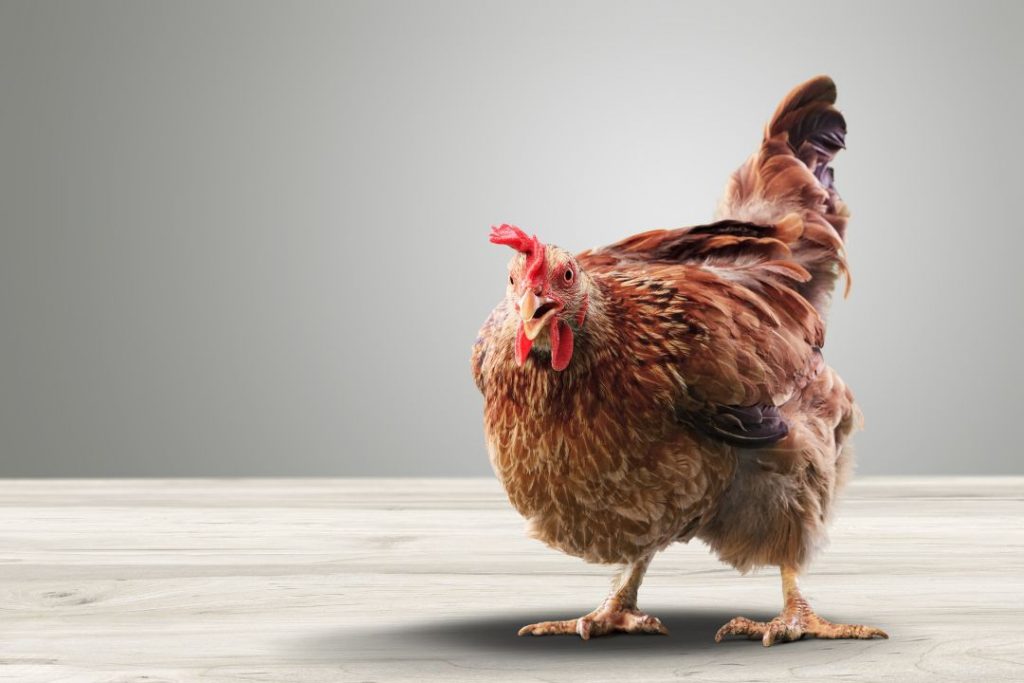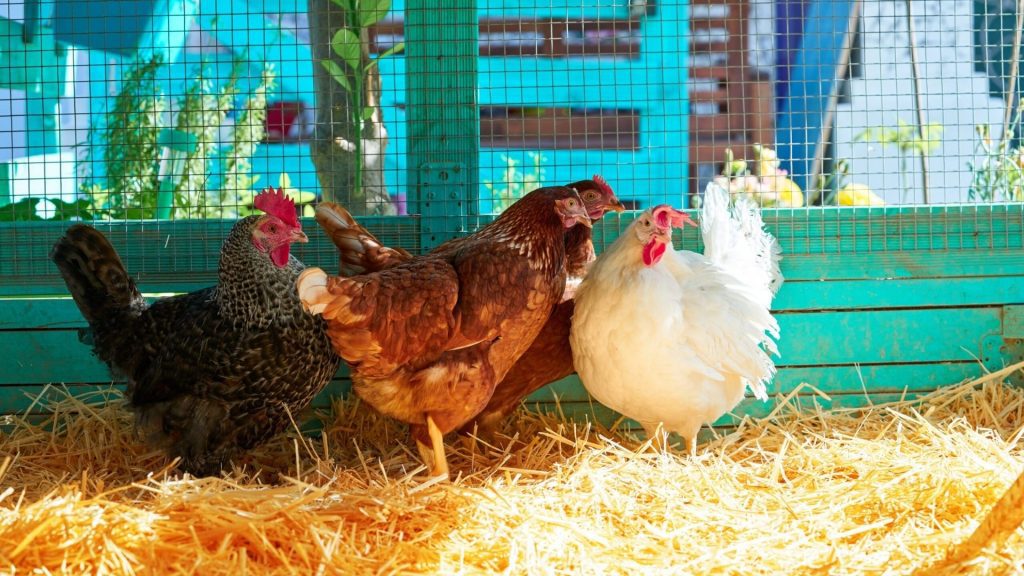The backyard chicken owners in summer month face one of the biggest problems named fly strikes. It is also known as myiasis. The flystrike not only causes the disease to your chicken but also brings them to the deadliest conditions. This disease affects so badly that often, without warning, it can kill your chicken.
Therefore the flock owners need to have some knowledge about it. As a chicken keeper, you must know how long does fly strike takes to kill a chicken. Usually, within 24-48 hours, the flystrike can cause the fatal condition of your chicken. And within this time, your chicken can face death if you fail to treat your chicken.
You must follow several preventive actions to keep your chicken safe from flystrike. You have to control the fly population, maintain and monitor your bird’s digestive health, etc.
Throughout this guide, we will explain more details regarding flystrike in chickens. So keep reading till the end!
What Is Flystrike In Chickens?
Flystrike is also named blowfly-strike, fly-blown, or myiasis. The maggot’s sanitized nickname is flystrike which lives in and feeds on the dead skin of your chicken. Ultimately it results in infection in the body of your hens.
This disease affects not only your chickens but also it can affect humans and other living animals. In whatever name you address flystrike, it is nasty. If you fail to recognize it in proper time and fail to treat it promptly, it can be fatal.
What Causes Fly Strike In Chickens?
Usually, chicken, through dust bathing, maintains their hygiene. But the building up of chronic diarrhea or fluid dripping on the vent feather makes it impossible for the chicken to keep clean. Your bird’s skin can break down due to the droppings in the soiled vent area.
However, flystrike can affect any area of your chicken’s body. But usually, they favor moist and dark locations to lay their eggs and grow. The vent area is the favorite area of flystrike in a chicken’s body. The dirty and sticky chicken butt is also the recipe for the flystrike.
Once the fly lays eggs, then in less than 24 minutes, the larvae can hatch into the maggots. Then maggots soon start feeding on the body skin of your chicken, which causes painful and deep sores. Blowflies, botflies, and screw flies are the most common flies that cause flystrike.
Flystrike takes place and spreads mostly in warm weather. Often the flock owner ask how long does a fly live? Usually, after birth, the fly can live up to 28 days. But to kill your chicken, it took very less time.
How Long Does Fly Strike Take To Kill A Chicken?
The most insidious affliction in nature is flystrike. Usually, from some underlying condition, the affliction starts. For example, your chicken might have diarrhea, wound, swelling, cut, or cold disease. And from this disease or vulnerable condition of your chicken, the flystrike can enter the body.
Once they enter the wound or body, then they lay their eggs. And after hatching for less or more than 24 hours, maggots start feeding the insides of your chicken skin. For flies, the ideal place to lay eggs is the vent area of your chicken. The dark, warm and moist area is best for the flies to lay eggs as they like dirt.
The eggs lie in the feathers of your chicken. And then, within 8-12 hours, they hatch the egg. Each fly lays a lot of larvae or up to 150 eggs. The larvae need food; for them, the food is chicken flesh. So the larvae burrow into the vent area of the chicken and feed on it.
For your chicken, this is an incredibly painful experience. It can sometimes be fatal for them. When flystrike attacks your chicken, they need emergency treatment. Otherwise, within a 24-48 hour period of highly fatal conditions, your chicken can die.
What Is The Flystrike Treatment To Save Your Chicken?
If your chicken becomes affected by flystrike, you must treat your chicken immediately. You must regularly inspect your chicken’s vent, especially in the summer. After checking if you find any eggs or larvae, we immediately recommend you take action.
- Take a large bowl in which your chicken will fit perfectly. Then run a warm bath of your chicken in the bowl. Up to the top or beyond the vent, submerge your chicken in case of a larger wound.
- To handle the first aid kit of your chicken, have a good pair of tweezers. Use the tweezers and remove the maggots as many as you see. Doing this is tough. But it’s the only effective way to get rid of flystrike.
- If you see too many flystrike in an area, then use a saline solution to clean the area. After cleaning it, use a warm hair dryer to dry that area.
- In case feathers keep the area wet and moist, then you must cut the feathers off. To prevent the re-infestation, you must keep the area clean, so it can’t grow back.
- Once the affected area becomes dry, then use the Vetericyn spray on that area. Make sure your first aid kit box contains some Vetericyn.
- We recommend you put the chicken into isolation with an open wound. Keep your birds in isolation until they become healed fully.
Repeat all the above prevention processes for several days and at least twice daily. Keep it doing until all the maggots are gone.
How To Prevent Fly Strike In Chickens?
Keeping the run clean, periodic application of poultry dust, and planting different fly-repelling herbs are the preventive measures against flystrike. Primarily myiasis is a warm-season disorder.
So throughout the summer seasons, inspect your chicken body for irritation or droppings dangling from their vents. In the summer season, apply poultry dust to your chicken’s feathers once a month, particularly under the wings.
Some more preventive actions that you should follow to keep your chicken safe from flystrike are:
1. Control Fly Population
You can significantly reduce the flystrike attack risk by decreasing the fly population. Take the necessary steps to control the flies in and around your chicken coops.
2. Monitor Your Chicken’s Digestive Health
Chicken droppings can vary depending on the texture. But consistently watery, runny, loose poop signals that your chicken has digestive problems. Diarrhea can cause coccidiosis, worm infestation, or other illness.
Diarrhea in your chicken is one of the biggest opportunities for the flystrike to grow. Therefore, frequently monitor the digestive health of your chicken. If you identify your chicken is facing any digestive health issues, immediately take preventive action.
3. Maintaining the Overall Health Of Your Chicken
You have to keep your chicken healthy. It is the obvious recommendation to prevent flystrike. Feed your chicken properly. And keep clean both the coop and run. Also, provide huge fresh and clean water to your chicken.
Anyway, to maintain good digestive health, you can add probiotics to your chicken’s water. Pay close attention to your birds and find if there are any injuries or wound areas there. If any, you must treat your chicken immediately.
4. Keep the Vent Dry And Clean
The flock owners must keep the feather of their chicken underneath the vent clean to prevent flystrike. If droppings are accumulating below the vent, we recommend you bathe your chicken. When cleaning the feathers is not possible, use the scissors to trim them carefully.
5. Inspect Regularly
Regularly checking the health condition of your chicken is a must to avoid flystrike. Dirty butts or wounded areas can immediately be the place of flystrike. Therefore, regularly check your chicken’s vent, feathers, body, and butt. And keep them dry and clean.
Frequently Asked Questions
How Do You Save A Chicken on a Fly Strike?
To save your chicken on flystrike:
- Offer them the electrolytes and vitamins in the drinking water for one or two days.
- Keep your chicken hydrated.
- Bath your chicken in warm water.
Especially submerge the affected area of your chicken in water.
How Do I Know If My Chicken Has a Flystrike?
Seeing the presence of eggs, visibility of maggots and moving insects, and apparent holes in the flesh, you can know it has flystrike. The other indicators of the fly strike are dead tissue or tissue necrosis appearance and bleeding.
How Fast Does Flystrike Happen?
Flystrike grows very quickly. For flying eggs and hatching, it takes only a few hours.
End Note
Hopefully, this guide has been helpful enough. And now you know how long does fly strike takes to kill a chicken. Flystrike is a threat to your chicken’s life. Within 24 hours, it lays eggs and hatches. And after that, it starts attacking your chicken’s body.
Your chicken goes through unbearable pain due to flystrike, and your birds can die within 24-48 hours. Therefore regularly check the vents of your chicken. Also, always follow the preventive actions to keep your flock safe from flystrike.
From our end, we have explained everything that you need to know. Now, if you have any further queries, you can comment. Soon we will reply to you.



